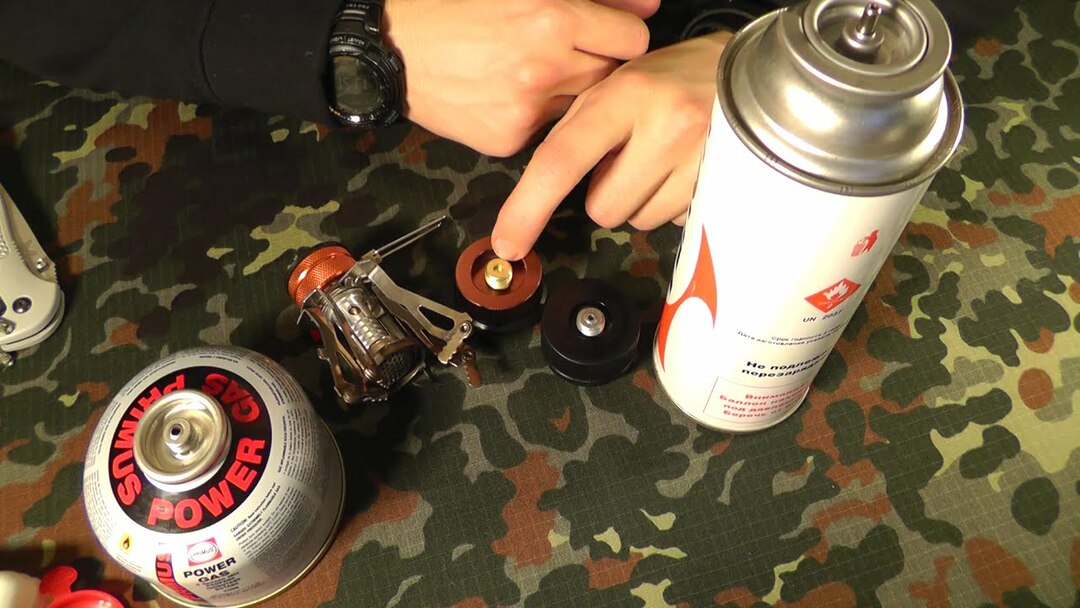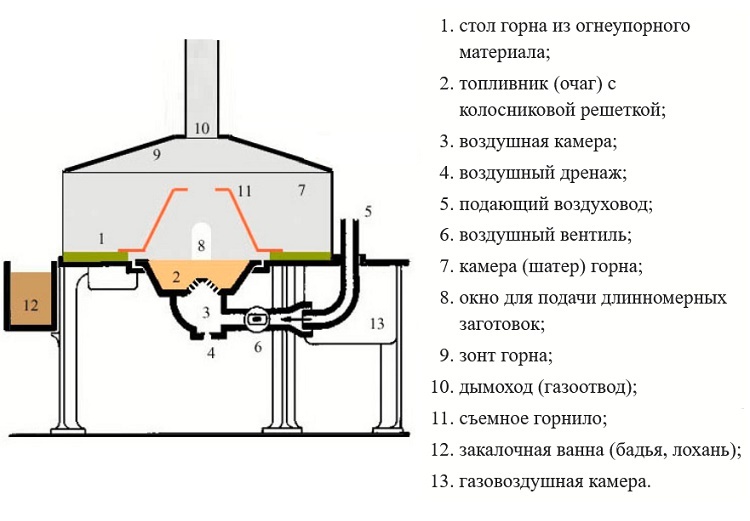It is difficult to imagine modern life without kitchen appliances - with its help we cook dinner, bake pies, store food, pamper ourselves with fresh coffee in the morning. And among the numerous equipment, the stove stands out, which has successfully replaced the home hearth - the stove.
The population of gasified areas, living in low-rise and private houses, uses gas-fired stoves. If this tireless assistant has also settled in your kitchen, we suggest you figure out how a gas stove works, what parts it consists of and how to increase its service life.
Our tips will help you take care of your equipment and react correctly if it breaks down.
The content of the article:
-
The design and principle of operation of a gas stove
- Hob structure
- How does a gas burner work?
- Oven device
- Electrical control and monitoring system
- Criteria for choosing a stove
- Operation and repair rules
- Conclusions and useful video on the topic
The design and principle of operation of a gas stove
If you use cooking equipment on a daily basis, then you know perfectly well what parts it consists of and how it works.
In terms of their structure, all gas stoves are very similar, and the differences relate to design or design features associated with additional functions.
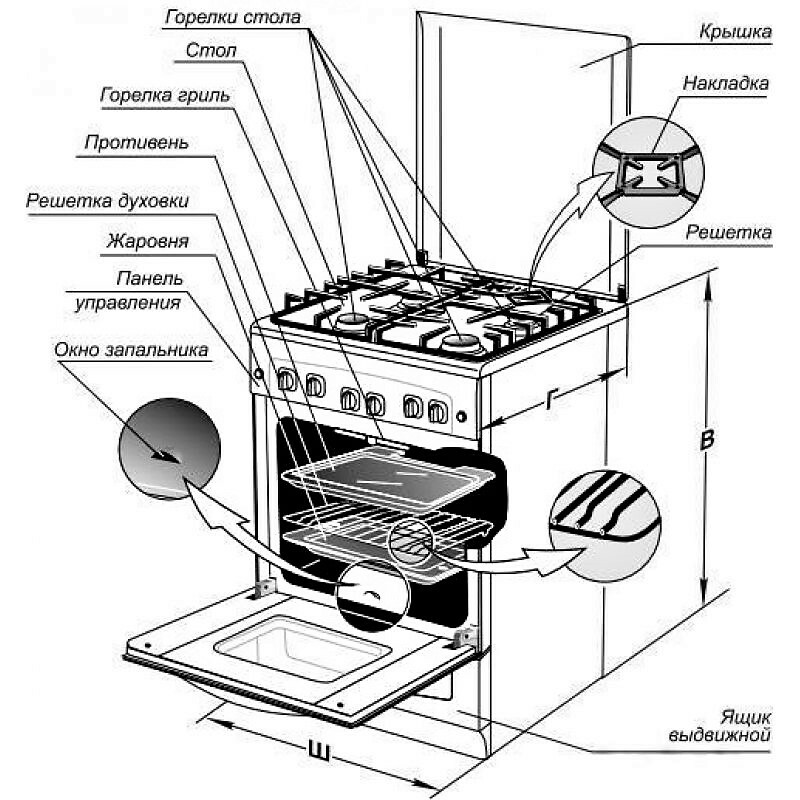
Diagram of the device of a standard gas stove. Two large work areas can be distinguished - a hob with burners (table) and an oven, which occupies a significant part of the total volume.
Modern manufacturers specializing in the manufacture of kitchen equipment are trying to diversify the range due to the more convenient location of the burners and the control panel, the internal filling of the oven, they introduce electronic stuffing.
At the place of installation, gas stoves are divided into floor and tabletop. The latter are more often used as a summer cottage or temporary option. Also distinguish autonomous hobs, without oven, which can be built into the worktop.
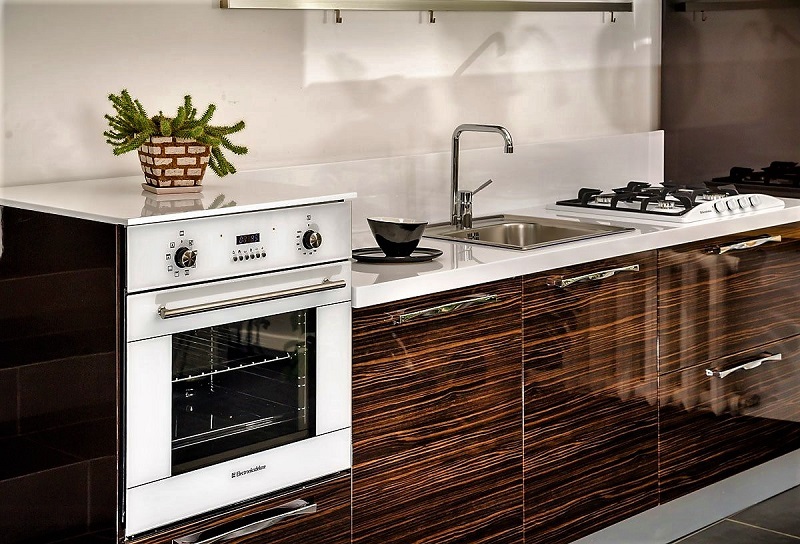
Built-in appliances have earned popularity among users for their ease of installation and operation. The stove and oven can be placed in different places, which is very valuable if there is a shortage of free space
But it must be borne in mind that the simpler and more primitive the design of the plate, the easier its maintenance. Inexpensive equipment, which is often purchased for installation in summer cottages, serves for a long time - there is no electronics in it, and parts that can break down are always easy to replace.
Overview of the main elements of the gas stove:
Image gallery
Photo from
The flat surface of the stove on which the burners are located. Modern models are often made of stainless steel, covered with heat-resistant enamel for protection. For more expensive slabs, you can find a table made of glass ceramics.
In other words, a broiler or oven used for cooking. The high temperature is maintained by the convection process and the circulation of heated air
For floor models and built-in hobs, there are usually 4, less often 5-6 burners, for portable tabletop - from 1 to 3. For ease of cooking, the burners differ in size. On / off processes are regulated by rotary knobs
Floor-standing models have another compartment under the oven, which is most often used to store dishes or baking utensils - forms, baking sheets
The control unit can be located either on the front, front side at the top, or directly on the hob, in front or on the side. This is a set of rotary knobs with a "low fire" position, for electronic models - with a display and buttons
It is difficult to imagine the baking or baking process without working accessories. Several accessories are usually supplied with a new hob - shelf racks, a pair of trays, a grill rack
There is a gas connection unit at the rear of the stove. It is a small metal nipple fitted with a threaded connection. More often, a flexible eyeliner of limited length is attached to it - up to 2 m
The upper part with the burners is protected by a cast iron or steel grate on which pots or pans are placed. Some stand-alone models have a separate stand for each hotplate.
Hob or table
Gas-fired oven
Set of burners - burners
Lower storage compartment
Control panel with handles
Set of shelves and trays
Gas pipe connection
Grill for cooking utensils
In addition to the listed elements, more complex and expensive equipment has additional details. it electric ignition unit and electronicsregulating the operation of the oven.
The latest models are produced with a pre-installed gas leakage control system: if the flame is accidentally extinguished, the fuel supply is instantly shut off in automatic mode.
Let's take a closer look at the elements directly involved in the workflow.
Hob structure
Now no one calls the upper plane with the burners located on it a "table", more often they use the name "stove" or "hob" - if we are talking about built-in appliances. This is the element that is most often used in the cooking process, and therefore requires regular maintenance.

Diagram of the device of a standard hob. Mandatory elements are burners and a control panel. The dimensions of the plate are indicated in the technical data sheet of the product.
In inexpensive models, the upper plane, like the entire body, is covered with enamel. If it looks attractive in a new product, then in the future the look of the enamel deteriorates significantly: cracks and chips appear, complicating maintenance.
A stainless steel stove also needs careful care. Matte or glossy surfaces do not like to be rubbed with metal brushes.
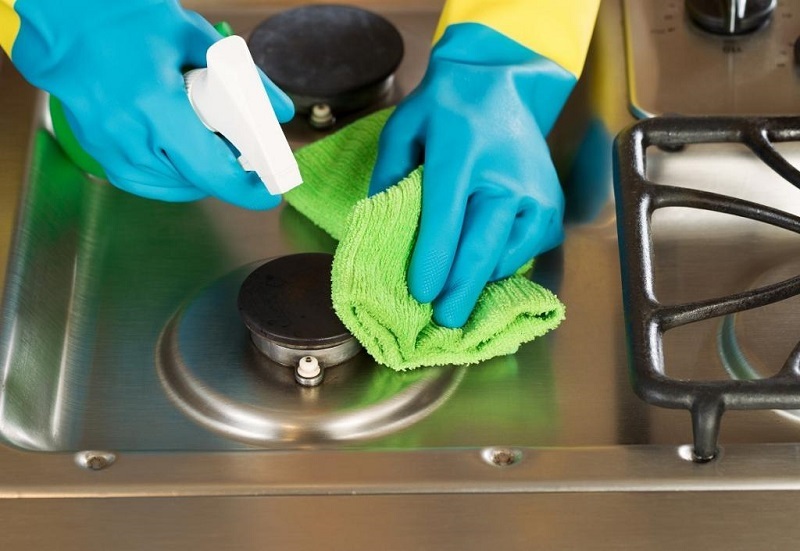
If you need to remove stubborn dirt or hardened grease, it is better to use household chemicals to clean the metal: a special gel, cream or spray
It is absolutely impossible to use abrasive products in the process of caring for kitchen appliances.
Well, the main working elements on the hob are still burners, which, if used incorrectly or poorly maintained, can quickly fail.
How does a gas burner work?
In household appliances, injection-type flame multi-torch burners are used. The principle of operation of any gas stove is based on the combustion process, which occurs after mixing fuel with air.
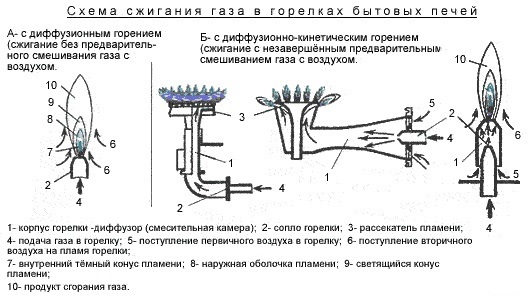
The scheme of mixing natural gas in a burner with primary and secondary air during the operation of the gas stove. Devices of this type only work at low pressure, typical for household networks.
The design of the gas stove burner may differ, depending on the features of the models and the possibility of adjusting the flame, but the main details are present in all products:
- nozzlecontrolling the gas flow rate at operating pressure parameters;
- diffuser (with or without a gate), in which the gas is mixed with the primary air;
- frame - a chamber where the process of mixing gas with air ends.
The gas-air mixture is discharged into the combustion zone through openings that are located around the circumference of the upper edge of the burner.
Slotted firing holes are covered from above with a steel cover that performs a protective and distribution function.
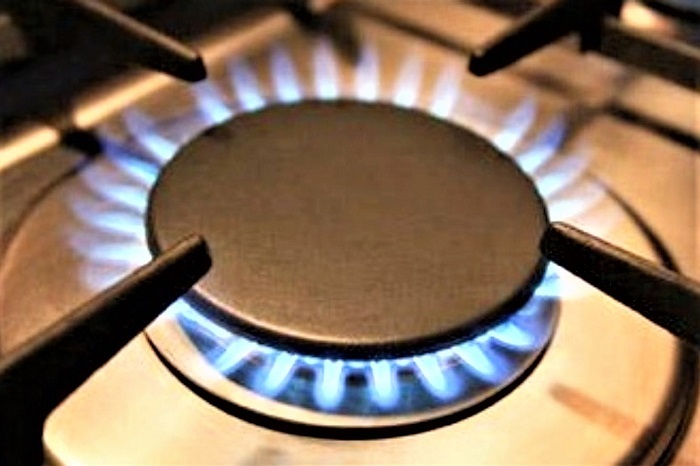
A flange is made along the edge of the lid, which is responsible for the fluency of the spread of the flame tongues and for the stabilization necessary for protection against tearing
The general structure of the burners of household gas stoves designed to operate on propane-butane differs slightly from their counterparts for natural gas.
Despite the strict rules for the production of gas stoves, the requirements for efficiency are not so high - only 56%.
When pilot flame burners appeared, some burner elements were considered impractical - for example, a gate. Instead of a gate, two holes at the inlet end of the mixer are responsible for injecting primary air.
Oven device
The oven is designed for baking dough products, roasting meat, fish, vegetables, etc. By design, it resembles an ordinary cabinet, but the shelves are made in the form of gratings that do not impede the free circulation of heated air.

The filling of the oven can be adjusted by moving the shelves higher or lower, replacing them with baking trays or special devices for baking or grilling
To maintain the required stable heating, it is equipped with a gas burner, which is different in design from the burner burners.
The heating itself occurs due to the circulating hot gases.
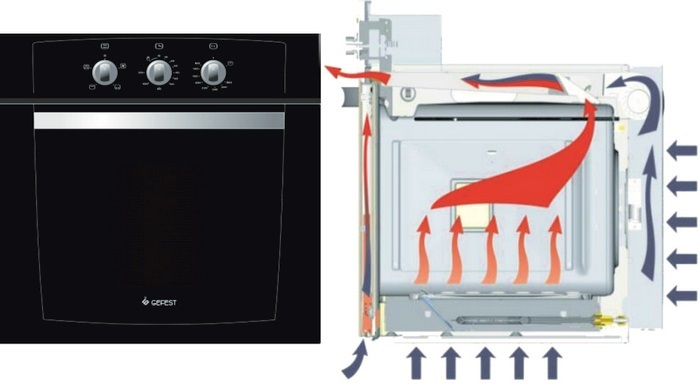
Air streams can move in different directions. It depends on the location of the gas burners inside the cabinet - from the sides, top or bottom.
In modern models, one of the frying burners is located in the upper part of the cabinet, which facilitates baking food from all sides. The top position is also typical for ovens with a grill function.
Disc-type burners with pilot flame are installed in domestic stoves.

Diagram of a stamped disk-type gas burner. On the edge of the lower disc there are small square holes through which the flame escapes, and the upper disc stabilizes it
The main burner, which is usually ignited manually or automatically, is equipped with thermocouple and ignition tube. An emitter with a screen is installed on the top frying burner.
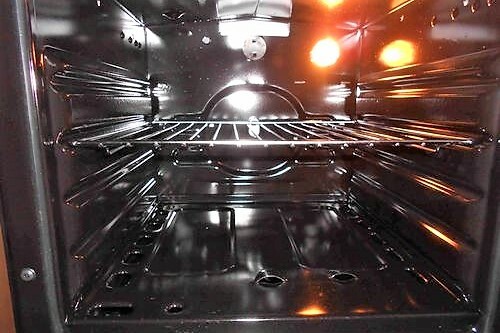
Almost all modern models are equipped with lighting, which greatly facilitates the use of the oven and allows you to observe the cooking process with the door closed.
For our own benefit, we recommend that you learn more about the device of the gas stove oven - this can come in handy for minor self-repairs or choosing new equipment.
It must be remembered that the process of using the oven is accompanied by the implementation of the rules. For example, you must not open the door during cooking - this drastically lowers the temperature and affects the baking process. Do not leave extra shelves or dishes in a working oven - this also negatively affects the result.
The typical design of the stove also assumes the presence of a drawer under the oven, the purpose of which can be learned from of this material.
Electrical control and monitoring system
In the cheapest stoves, electronic control is not provided - the whole process is regulated mechanically. In more expensive models, the electrical system is connected to enable the functions electric ignition and lighting ovens as well skewer control.
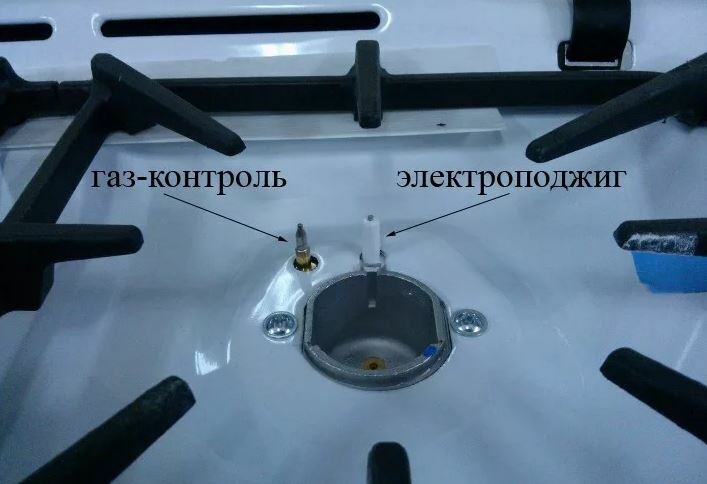
The design of the plates with electric ignition includes candles located on the divider body. They are instantly triggered when turned on, that is, at the moment of gas release
Some users are so accustomed to the auto-ignition system that they get lost when the power goes out and do not know how to turn on the gas. This is done simply: the control handle must be put in the working position, and then quickly bring a lighted match to the divider.
The backlight function works in different ways: in some ovens it is turned on by pressing a button, in others it automatically, every time the oven is turned on.
Gas control is very useful, the work of which is carried out by a thermocouple.

The main purpose of the thermocouple is to shut off the gas supply if the burner flame goes out for some reason. Working principle: the fire disappears, the temperature drops sharply, the gas is automatically shut off
The most expensive models are equipped with electronics that facilitate both the cooking process and the maintenance of the equipment.
Using the panel with buttons and display, you can control all processes, among which may be the following:
- timer;
- delay start;
- steam cleaning of the oven;
- several cooking modes;
- light and acoustic signaling;
- electronic temperature control;
- quick cooling system, etc.
If the stove is inexpensive, but equipped with electronics, you should ask yourself the question: how often do you have to contact the service center? Because electronic equipment, according to statistics, breaks down much more often than usual.
Criteria for choosing a stove
Consider the features of gas stoves that do not relate to their technical characteristics, but relate exclusively to the design.
Design, filling, arrangement of elements are no less important than power or the number of operating modes.
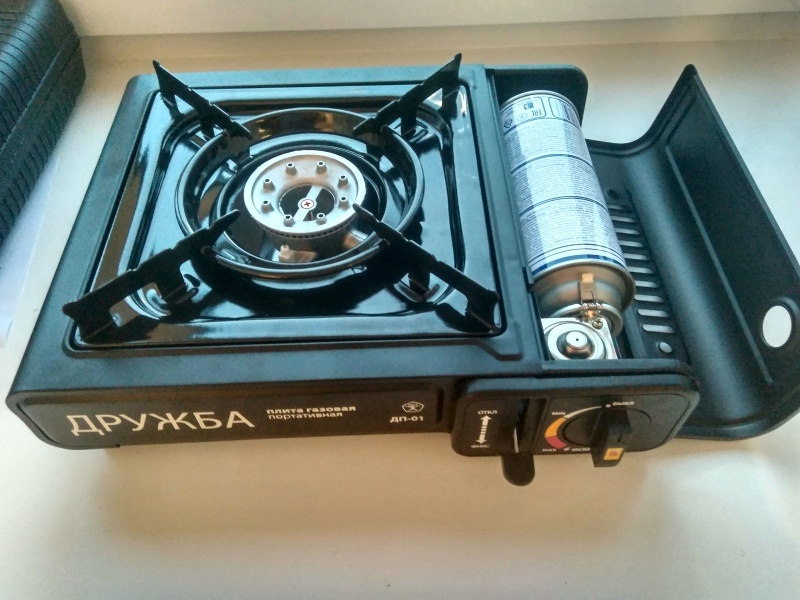
If you are interested in a device for seasonal use in the country, do not even go to the expensive department appliances - a portable stove with a connection to a gas cylinder will satisfy your needs and will last a long time
For permanent use, it is necessary to choose a reliable functional unit of a proven brand. To do this, you can read reviews and reviews posted in large numbers on the network.
When buying from a design point of view, pay attention to criteria such as:
- the dimensions of the stove in general and the hob in particular;
- the volume of the oven;
- set of accessories for the oven;
- location of the control panel;
- location of the gas connection;
- the possibility of replacing burners for operation with bottled gas;
- number and size of burners.
Any unaccounted for little thing in the future can cause discomfort and dissatisfaction with the work of the stove, so try to think everything through in advance.
Operation and repair rules
The serviceability of equipment and your personal safety largely depends on how you treat the equipment. This includes correct installation, careful use, regular maintenance and replacement of parts that have a limited life.
Here are the basic rules for using a gas stove:
- regularly clean the grate, the surface of the stove, burners, control knobs;
- keep in touch with representatives of Gorgaz and regularly carry out maintenance of equipment;
- ventilate the room, even if you use a hood;
- in case of a long absence, turn off the shut-off valve;
- make sure the handles are off when the hob is not in use.
You also need to be careful with the operation of the oven. He, like any equipment, requires cleanliness and serviceability of all parts.
It is not recommended to use the oven as an ordinary cupboard for storing dishes, especially when cluttering it up with easily flammable or melting objects.
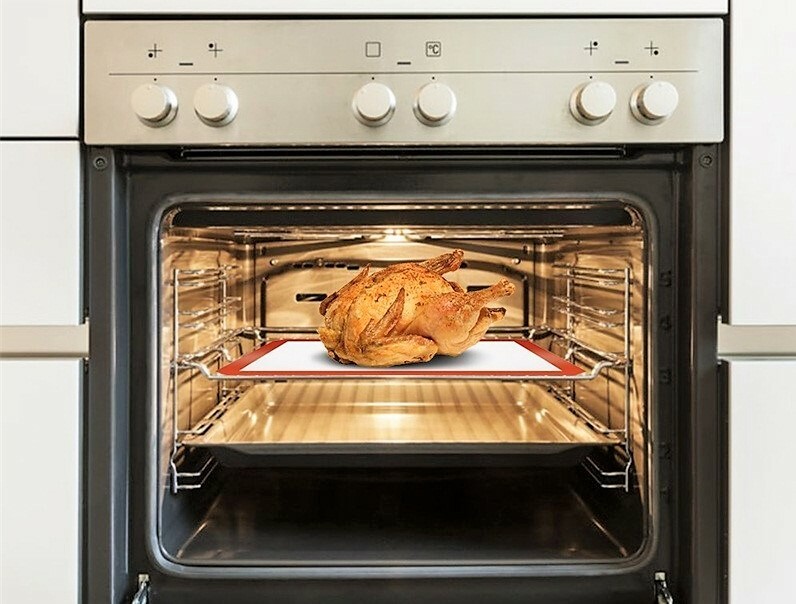
Only "working" accessories should be inside the oven: baking trays, grates, grill accessories and utensils or tins, if they are involved in cooking
If the ventilation is faulty and it is not possible to open the window or window, it is prohibited to use gas equipment.
If a specific smell of gas appears, it is necessary to turn off the fuel supply valve, open the windows and call the emergency service. During the waiting period, you cannot turn on electrical appliances, ignite a flame, and it is better to leave the room altogether. Even a call is recommended to be made from the staircase or from the street.
The repair of gas equipment should be carried out either by invited specialists from the service organization, or by employees of a specialized service center.
Conclusions and useful video on the topic
Helpful hints for the care of the cooking zones:
How to replace the jets when switching to liquefied fuel in cylinders:
A gas stove is a complex household appliance that requires familiarity with both the design features and the rules of operation. Before using this necessary kitchen equipment, we recommend that you carefully study manufacturer's recommendations, ask questions of interest to the employee of the gas service and learn how to operate stove.
Remember that gas appliances, along with electrical ones, are household items hazardous to health and life, so follow the rules of use and report a potential threat in time!
If you still have questions about this article or you can give valuable advice on the care or choice of a gas stove, please leave your comments in the block below the article.

